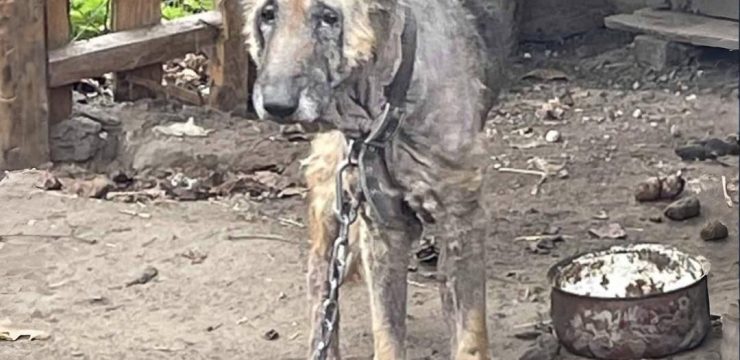We’ve all had that moment—reaching for a slice of bread in the pantry, only to find it dry, tough, and far from the fresh loaf we originally bought. It’s easy to feel a little disappointed and think about tossing it in the trash. But wait—before you do, remember what your mother-in-law always says: “Don’t waste good bread!” And she might just be right. The decision between throwing away stale bread or finding a way to reuse it is something most of us face more often than we’d like. But is stale bread really bad? Or is there still value in that crusty loaf?
Let’s dig into what stale bread really is, whether it’s safe to eat, how it impacts the environment, and some surprisingly creative (and tasty!) ways to give it a second life.

1. What Does It Mean When Bread Goes Stale?
Stale bread isn’t rotten—it’s just lost its moisture and become dry and hard. This change happens because of a natural process called retrogradation, where the starch molecules in the bread start to crystallize and push out water. It can happen within a few days, especially if your bread isn’t stored properly.
That being said, just because bread is stale doesn’t mean it’s spoiled. Stale bread is still safe to eat as long as it’s mold-free. While the texture might not be great for sandwiches, the bread itself isn’t harmful.
2. Is Stale Bread Safe to Eat?
Absolutely—if it’s just dry and hard, you can still eat it. What you do want to watch out for is mold. Mold appears as fuzzy patches in green, black, or white, and it’s a dealbreaker. Mold can release harmful toxins called mycotoxins, which you definitely don’t want to consume.
So if your bread’s just a little past its prime but not moldy, it’s perfectly fine. You can toast it, bake with it, or get creative in the kitchen.
3. Why Tossing Bread Is a Bigger Problem Than You Think
Food waste is a global issue, and bread is one of the top wasted foods. Worldwide, about 1.3 billion tons of food get tossed every year. That’s not just money down the drain—it’s also a waste of the water, energy, and resources used to produce and transport that food. Plus, when food rots in landfills, it releases methane, a powerful greenhouse gas.
By reusing stale bread instead of throwing it out, you’re helping the planet, reducing waste, and saving money. It’s a small act with a big impact.
4. How to Bring Stale Bread Back to Life
Believe it or not, you can revive stale bread with a little moisture and heat. Try sprinkling it with a tiny bit of water and popping it into a 350°F oven for about 10 minutes. It’ll soften up and almost feel like fresh-baked again.
Another smart move? Use it in recipes that mask the texture—think French toast, bread pudding, stuffing, or strata. These dishes soak the bread in liquid, turning it tender and delicious again.
5. Internet Hacks for Stale Bread
Social media is full of smart hacks for using up stale bread. One of the most popular? Making your own breadcrumbs. Just pulse the dry bread in a food processor and store the crumbs in an airtight jar. Use them in meatballs, casseroles, or as a crispy topping.
Another fan favorite is homemade croutons. Chop the bread into cubes, toss with olive oil and seasoning, and bake until golden. Throw them on salads or into soups for some crunch.
6. Does Stale Bread Still Have Nutritional Value?
Yes! Just because the bread is dry doesn’t mean it’s lost its nutrients. The carbs, fiber, and vitamins are still there. The main thing that’s changed is the texture, not the nutrition. However, if the bread was enriched with added nutrients, those might fade slightly over time. Still, stale bread offers the same basic fuel for your body.
7. Store Bread Right to Prevent Staleness
Want to keep your bread fresher longer? Store it in a cool, dry place like a bread box or paper bag that allows for a little air circulation. Avoid the fridge—cold temperatures actually make bread go stale faster due to quicker starch crystallization.
Got more bread than you can eat in a few days? Freeze it! Wrap it tight in plastic or foil, toss it in a freezer bag, and pull it out when you need it. Let it thaw at room temp or toast it straight from the freezer.
8. When It’s Time to Let Go
Not all stale bread is worth saving. If it smells bad, looks fuzzy, or tastes off, it’s time to say goodbye. Mold can be sneaky—it might be growing inside even if you don’t see it on the outside. Don’t risk your health to save a dollar.
Also, if the bread is rock-hard and no longer pleasant to eat, even after trying to revive it, there’s no shame in tossing it.
9. How Cultures Around the World Handle Stale Bread
In some places, people throw out food as soon as it stops looking fresh. But in many cultures—especially in Europe—people have long traditions of using every bit of food, including stale bread. In Italy, dishes like panzanella (bread salad) are born from day-old bread. France’s pain perdu (aka French toast) is another example of making the most of leftovers.
Learning from these traditions can inspire us to reduce waste and rethink what we consider “bad” food.
10. What Chefs Think About Stale Bread
Top chefs don’t view stale bread as trash—they see it as an opportunity. Chef Massimo Bottura, for example, has built recipes around using leftovers, including stale bread. For them, it’s all about creativity, sustainability, and respecting ingredients.
11. So—Should You Save or Toss It?
If your bread is dry but mold-free, and you’re open to using it creatively, it’s definitely worth saving. But if it smells off, is covered in mold, or just doesn’t taste good anymore, it’s okay to let it go.
The choice is yours—but the more you know, the better decisions you can make. Whether you’re trying to stretch your grocery budget or reduce your environmental footprint, stale bread might just be the ingredient you didn’t know you needed.





